Award-Winning Campervan Hire in Australia | Email, chat or call the Spaceships AU Crew

Hit enter to search or ESC to close
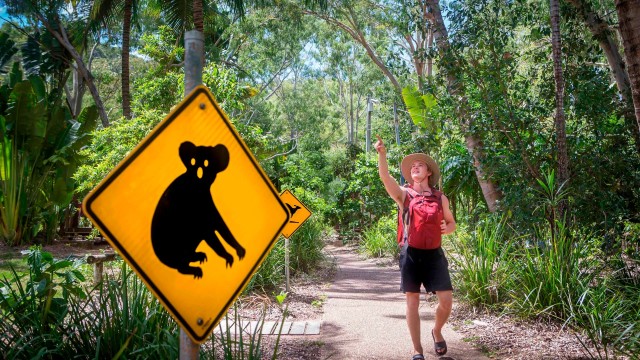
Unlock the Secrets of Australia's Wild Side: The Ultimate Camper's Guide to Wildlife Adventures
20 February, 2024
Posted by Mike | Spaceships Crew
Australia is a huge and diverse country, home to a wide variety of animals and wildlife, many only found down under. Here we tell you where to find amazing wildlife wherever you are camping in Australia.
Jump for joy with Kangaroos
The Kangaroo is Australia’s best known marsupial. A marsupial is born partially formed and is often carried in its mother’s pouch for milk and protection. Around 66% of the planet’s marsupial population lives in Australia. Other marsupials include Wallabies, Koalas, Wombats and Possums which are plant-eating herbivores, Bandicoots that eat both plants and meat and meat eaters like the Tasmanian Devil.
If you’re touring New South Wales head down to the Murramarang National Park, some 200km south of Sydney. With 44 km of coastline, you can see Eastern Grey Kangaroos as they graze on the grass on Pebbly Beach. With abundant birdlife and the chance to hike, swim, snorkel or fish, it’s a great place to get back to nature.
The dramatic Great Ocean Road (B100) which begins close to Melbourne is an unmissable road trip. It’s also a great place to spot Kangaroos, especially at Pebble Point near Princetown, or Bells Beach, the famous surfing beach just south of Torquay.
If you enjoy a round of golf, one of the more unusual places to see Kangaroos is hopping around on the Anglesea golf course.
Another strange place to see Kangaroos in Victoria is the 800-acre Woodlands Historic Park, adjacent to Melbourne Airport. As well as seeing Eastern Grey Roos, you may also see birdlife, Echidnas, Wallabies and Bandicoots.
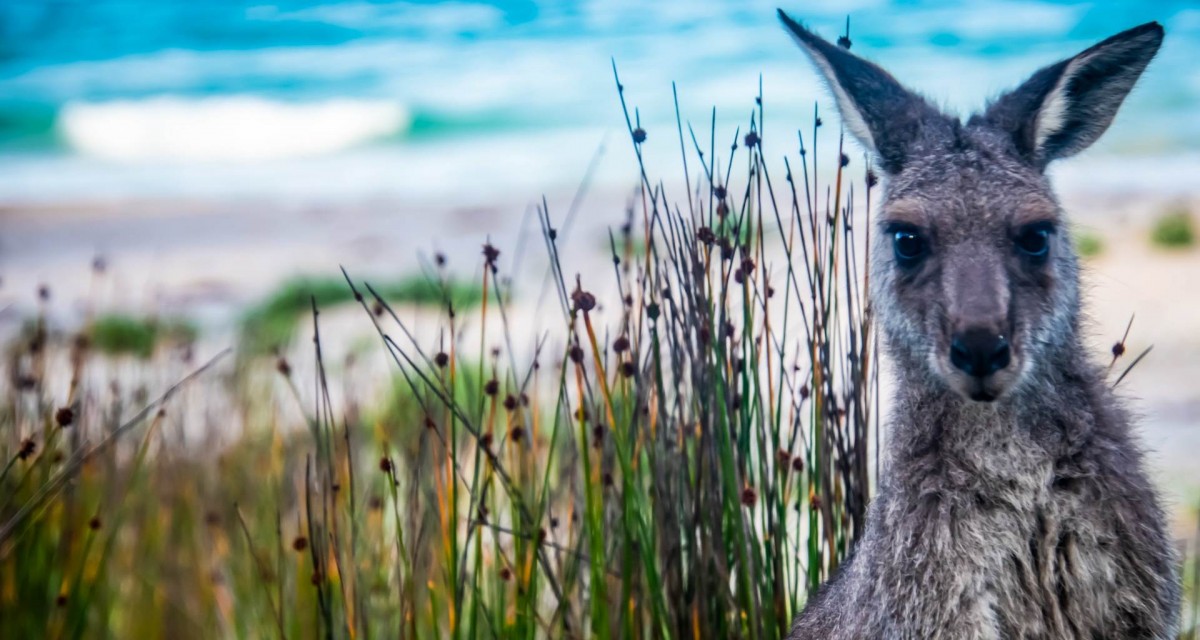
Meet the locals on your #SpaceshipsRoadTrip, like kangaroos as cute as this one
If you are travelling in Queensland, check out the beautiful Cape Hillsborough National Park near Mackay, where you can get up close and personal with Kangaroos and Wallabies on the beach. Cape Hillsborough is about one and a half hour's drive from the Spaceships branch at Airlie Beach.
Head over to Tasmania to pick up or drop off your campervan in Hobart to see an abundance of wildlife. The Bonorong Wildlife Sanctuary at Brighton is a wildlife rescue centre which helps to get injured animals back into the wild.
As well as Forrester Kangaroos, you can see Wombats, Tasmanian Devils, Eastern Quolls, Echidnas and Sugar Gliders.
Meet cuddly and cute Koalas
The name “Koala” is said to translate as “no drink” or “no water” from the Indigenous Dharug language. This is understandable as Koalas rarely drink water in the wild as most of their water comes from their diet of fresh Eucalyptus leaves. They are also notoriously sleepy, sleeping for between 18-22 hours every day.
Koalas can be found in southeast and east Australia, mainly along the coasts of South Australia, Victoria, New South Wales and Queensland.
You’ll find Koalas in the treetop canopies at Port Stephens, about 2-3 hours north of our Sydney depot. Go to the Tilligerry Habitat, an eco-tourism reserve where entry is free. A couple of hours further north is the town of Port Macquarie, the site of the world’s first Koala hospital.
If you’re Aussie campervan hire starts in Brisbane, and head north to Sunshine Coast and Noosa National Park. Follow the 7km/4 mile Tanglewood Track to see Koalas in the treetops above.
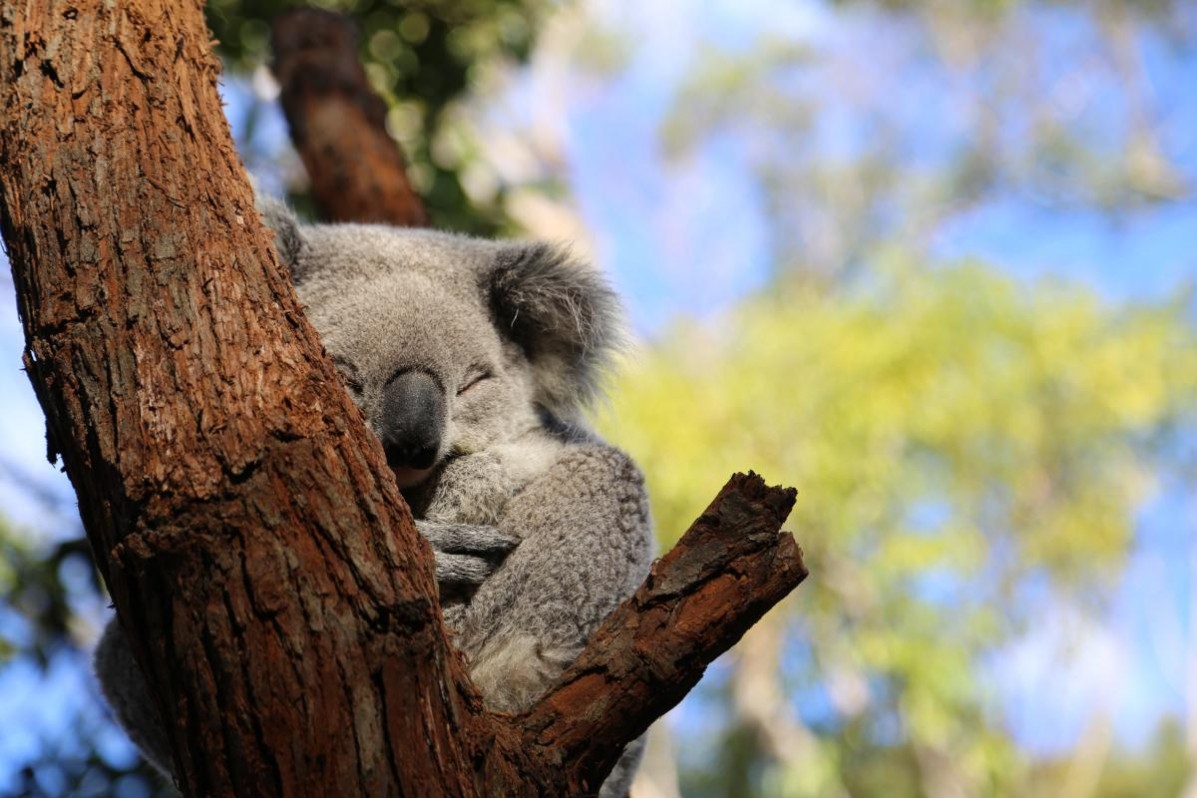
Meet these sleepy cuties on your campervan road trip - Helloooo Koala
Wanna see a Wallaby?
The Crow’s Nest National Park in southern Queensland is a great location to see Bush-Tailed and Swamp Wallabies, and the Eucalyptus forests there are also home to Gliders and Bush-Tailed Possums.
You’ll see Swamp and Black Wallabies at Phillip Island around 90 minutes from our Melbourne branch. It’s also home to Fur seals and the world’s smallest Penguins, known as Little Penguins.
Head about an hour west of Cairns to Granite Gorge National Park to find wild Rock Wallabies or take a trip down the coast from Airlie Beach to visit Magnetic Island to see Koalas in their natural habitat.
See Bennett or Red-necked Wallabies at Freycinet National Park in Tassie and rare White Wallabies in South Brunny National Park around 50kms south of Hobart.
Wonder at Wombats
You really will start to wonder at the wonderful world of Wombats. The world’s largest burrowing mammal has cubed-shaped poop – of course – to stop it from rolling away when they mark their territory. A group of them is known as the Wisdom of Wombats. To protect their burrows from predators, they block the opening with their large butt sticking out. This is mostly cartilage and practically immune to scratches and bites. So never bite a Wombat’s butt – a complete waste of time!
To see these critters in the wild, try camping at Bendeela campsite in Kangaroo Valley, about two and a half hours drive from Sydney.
In Tasmania, Maria Island and the Cradle Mountain-Lake St Clair National Park are home to the common Wombat.
You’ll also find them in Gippsland, south of Melbourne or in a more controlled environment at the late Steve Irwin’s Australia Zoo in Beerwah, Queensland.
See whales make a splash
April to November is the time to see migrating Humpback Whales all along your east coast road trip. They spend the summer months feeding on krill in Antarctica before heading back up north to the warmer, sub-tropical waters to mate and give birth.
These migratory whales are so common, that you may even spot a whale passing by on the Bondi and Coogee coastal walk in Sydney. Better still, head 3 hours south to Jervis Bay where you can see Humpbacks from the Crookhaven Heads Lighthouse and Penguin Head.
If you are picking up or dropping off your Spaceships campervan in Brisbane, head to Hervey Bay. The sheltered waters are ideal for whales to breed and nurse their young, and you may even spot a young calf whale in early September.
Other whale-watching locations include Logan’s Beach, about 3 hours from Melbourne on The Great Ocean Road. In Tasmania, you can see Humpbacks and Southern Right Whales in the clear waters of Great Oyster Bay off the Freycinet Peninsula, or from Frederick Henry Bay.
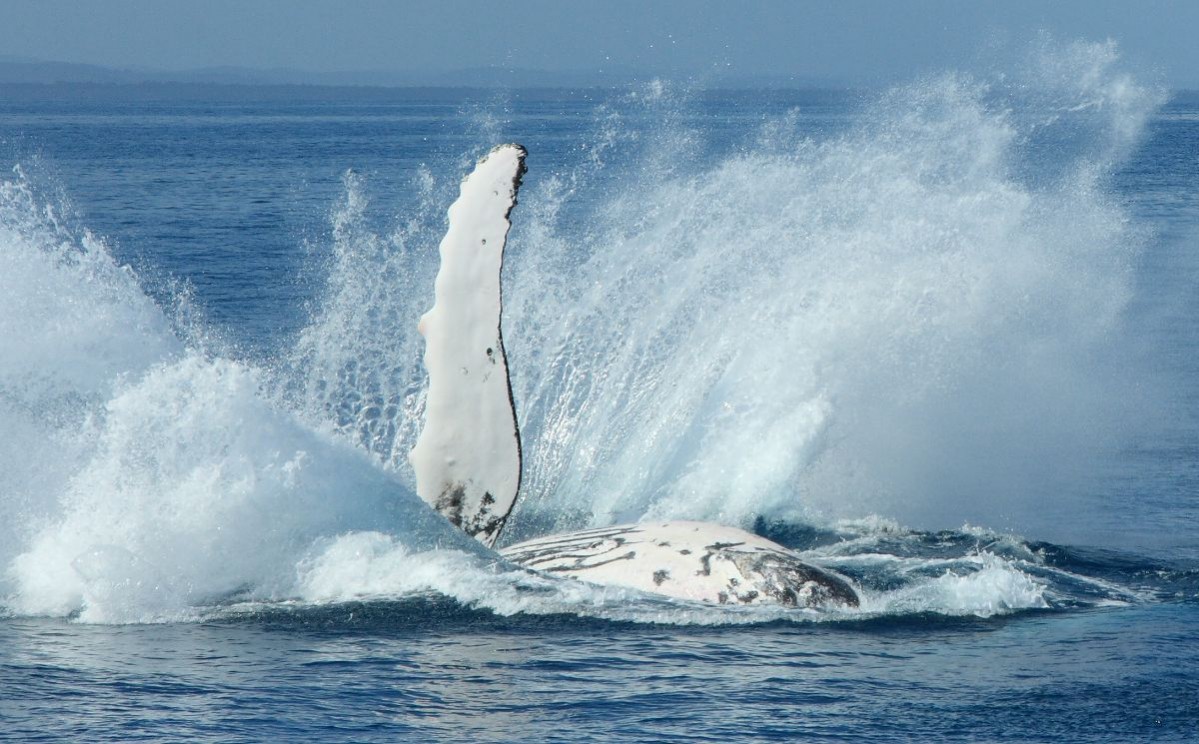
Go whale watching in Hervey Bay - A must-do on your Aussie campervan road trip
Posing with Possums
There are around 23 species of Possums in Australia, with male possums known as Jacks and a group of possums called a passel. So if you’re lucky, you could even be posing with a passel of possums!
They are commonly found all over the east coast in Victoria, New South Wales, Queensland and Tasmania. They live in trees but frequently come down to look for food, even in urban areas.
Dog Days with Dingoes
Dingoes are the largest living land predators in Australia, living together in packs of about 10 -15. To help them hunt rabbits, rodents, birds and reptiles, they can jump up to 2m high from a standing position.
The best place to see Dingoes in the wild on the east coast of Australia is on K’Gari (Fraser Island), the world’s largest sand island. There are thought to be around 25-30 packs on the island and you can see them on the beach at dawn or dusk, or hear them nearby, howling like wolves.
As with all animals in the wild, do not approach them or try to pet or feed them. They may look like cute domestic dogs, but they are wild animals.
Seek the smile on a Quokka quest
Quokkas must be the happiest creatures in Australia. They are like real-life emojis, rocking permanent smiles that make them Instagram stars! These little bundles of joy are native to Australia and call Rottnest Island near Perth their home. They are more than just cute; they’re selfie kings and queens and cool with humans.
Imagine chilling with these happy-go-lucky furballs, snapping pics that’ll make your feed pop. Plus, spotting quokkas is more than fun—it’s a walk on the wild side, Aussie style. So, if you're hitting up Australia, don't miss out on meeting these adorable critters. It’s a unique, once-in-a-lifetime kind of adventure that’s totally Insta-worthy!
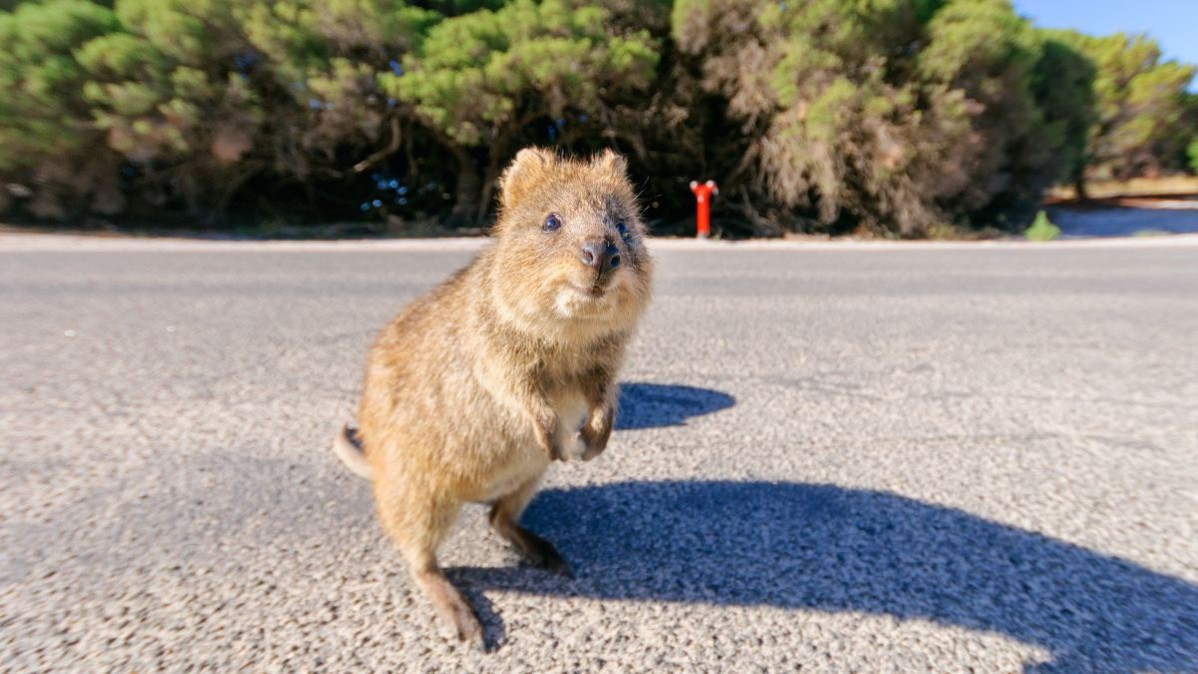
Caught in a Quokka Smile: Happiness Unleashed! | photo: Eirik (Flickr CC BY-NC-ND 2.0)
Never smile at a Crocodile
There are 2 kinds of crocs in Aussie, freshwater crocodiles known as “Freshies” or saltwater crocodiles known as, yes, you’ve guessed it, “Salties.” Saltwater crocodiles are the largest reptile in the world and date back to the Mesozoic Era over 240 million years ago.
They can live to a ripe old age too, often over 100 years. A freshwater crocodile caught by Steve Irwin and his father in 1970 on the Moorehead River was kept in captivity and thought to have been 140 years old.
These apex predators can be dangerous, but several tourist attractions keep crocodiles and have feeding events. It’s a safe way to see Crocs, but not a particularly authentic experience.
You could go for a Daintree Adventure Tour where you will explore the verdant Daintree Rainforest and the crystal-clear waters of Mossman Gorge. This adventure offers an unparalleled immersion into the heart of Australia's natural beauty and wildlife diversity. From the adrenaline-pumping 'Swim with the Salties' experience to the intimate encounters with native animals, every moment is packed with excitement and awe.
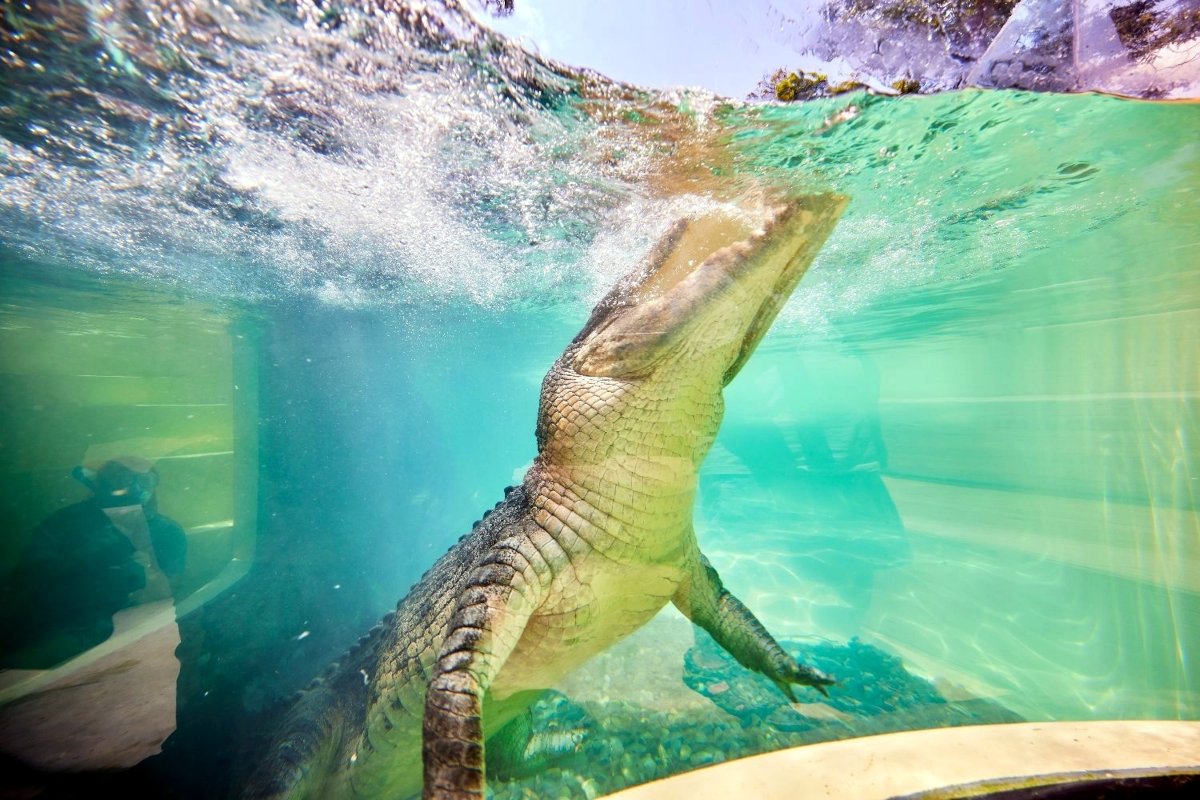
A must-see local: the Aussie Croc | photo: Wildlife, Daintree Rainforest & Mossman Gorge Tour
Here's a list of the animals you will see on the Daintree Wildlife Tour:
- Saltwater Crocodiles: Encounter these majestic, prehistoric creatures up close. The thrill of being near one of the world's most powerful predators is an unmatched adrenaline rush. Witnessing their sheer size and strength during the Crocodile Feeding Presentation is a breathtaking experience not to be missed.
- Wallabies and Kangaroos: Hand-feed these iconic Australian animals. The opportunity to interact so closely with such friendly and curious creatures offers a unique and personal wildlife experience.
Wetlands Birds: Immerse yourself in the vibrant world of avian species. Observing these birds in their natural habitat offers insights into their diverse behaviours and the complex ecosystems they inhabit. - Cassowaries: Spotting the elusive and strikingly beautiful cassowary is a rare and exciting event. These birds are an integral part of rainforest ecology, and witnessing one is a moment to treasure.
- Koalas: Experience the calm and serene presence of these beloved marsupials. The chance to see koalas up close is a highlight for any wildlife enthusiast, offering a moment of connection with Australia's unique natural heritage.
- Reptiles: Explore the diverse and intriguing world of reptiles. From skinks to snakes, the variety and adaptability of these creatures provide a fascinating window into the complexity of nature.
- Tree Kangaroos: Discover these rare and enchanting marsupials high in the treetops. The sight of a tree kangaroo lounging in the branches is a unique and unforgettable spectacle, showcasing the diversity and wonder of the rainforest.
It's not just a trip; it's an exploration of life itself, offering once-in-a-lifetime moments that will ignite stories and memories for years to come. The chance to connect with nature in such a direct and personal way is truly a big deal, providing a profound and inspiring journey into the wild.
You could also take a Whitsunday Safari on the Prosperine River another natural habitat for estuarine or saltwater crocodiles.
More Aussie Wildlife on your road trip
Sure, kangaroos and koalas are the classic Aussie icons that everyone raves about, but Australia's wildlife scene is way more epic than just its greatest hits. As you hit the road and dive deeper into the wild Aussie landscapes, get ready to meet the underdogs of the animal kingdom that are all kinds of awesome.
Each of these creatures is a star in its own right, turning your road trip into an unforgettable tour of Australia’s wild side. From the mysterious rivers where some of these paddle to the forests where the others shuffle, and from the wide-open spaces home to the rest of these rockstars to the lush jungles guarded by cassowaries, Australia’s lineup of wildlife is ready to rock your world.
Platypus and Echidnas
First up, let’s talk about the platypus and echidna – these critters are like the punk rockers of the mammal world, breaking all the rules by laying eggs. Spotting them is like snagging tickets to a sold-out show: rare, thrilling, and totally brag-worthy. These are the only two monotremes in the world., which means they are the only mammals that lay eggs.
Echidnas are small, spiny creatures that can be seen in the wild on Cradle Mountain in Tasmania. They can also be found at the Koala Park Sanctuary in Sydney and the Yarra Valley and Dandenong Healesville Sanctuary near Melbourne. The Currumbin Wildlife Sanctuary near Brisbane is also home to Echidnas.
Platypus are found from the tropics of Northern Queensland to the colder climate of Tasmania. It’s a weird creature with a duck bill, a sleek, fur-lined body and a powerful long tail.
Head to Running River in Hidden Valley in Queensland in the late afternoon, or the aptly named Platypus Reserve on the Bombala River in New South Wales. On your campervan trip in Tasmania, try the Mersey River in the Warrawee Forest Reserve in Latrobe, where platypuses are abundant.
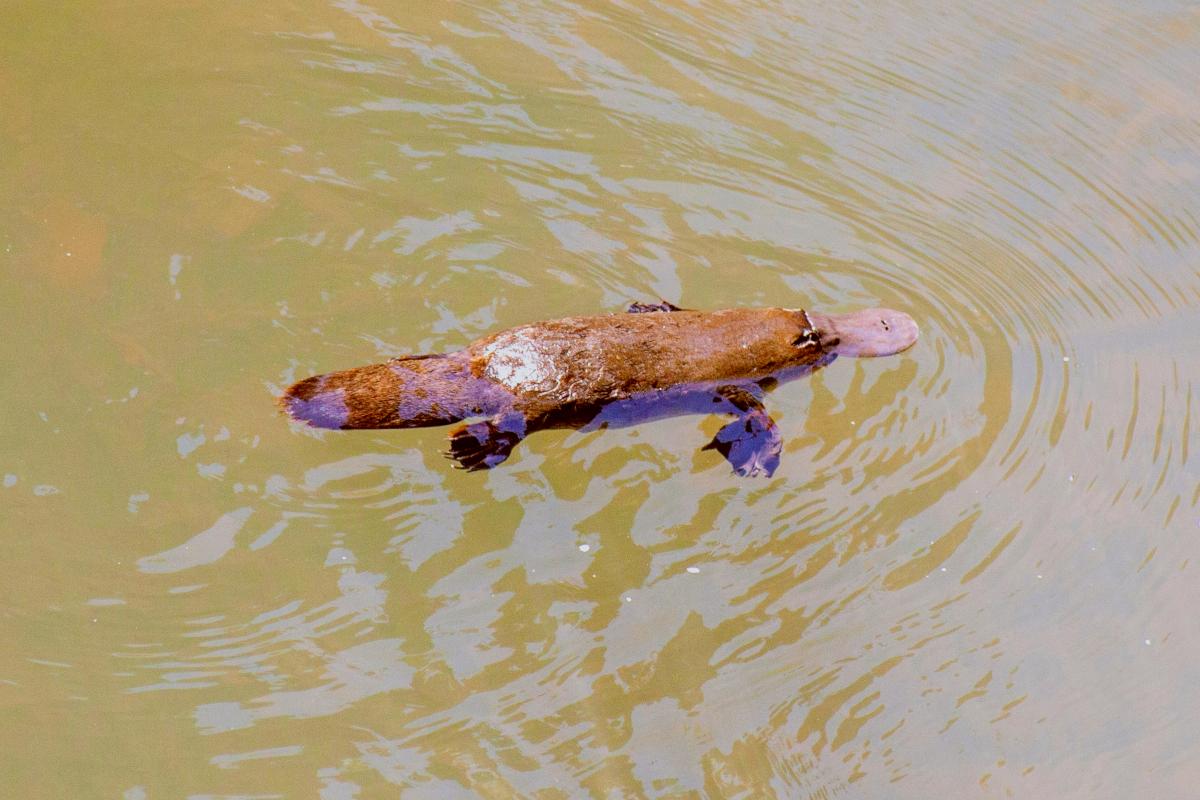
Platypus: such an interesting creature. Another must-see in Australia
Emus and Cassowary
But wait, there’s more. Imagine crossing paths with the emu, a bird so tall it could look you in the eye and just as chill. These feathered giants strut their stuff across Australia’s vast stages, from bushland to beaches. And then there’s the cassowary, decked out in colours so bold they’d put any festival outfit to shame, ruling the rainforest with a vibe that’s part ancient dinosaur, part modern-day avian badass.
The Emu is endemic to Australia the largest native bird, second largest in the world to the Ostrich. It is flightless and grows to more than 1.5m tall. Emus are found throughout Australia and can be seen in wildlife parks.
You can also try Yaraka in Outback Queensland, where emus can be seen strolling through the town’s streets.
You’ll find emus and cassowaries as well as loads of other wildlife on Philip Island Wildlife Park, open from Friday to Tuesday and about 90 90-minute drive from Melbourne. Despite the fact it is an island, you can drive onto Phillip Island on the M420 and then B420.
The Cassowary is the third largest bird in the world, but second heaviest behind the Ostrich. It is a large, flightless bird that lives in the coasts and rainforests of tropical north Queensland.
You can see Cassowaries all down the North Queensland Coast from Cape York and Daintree Forest in the north, through Mission Beach down to the Paluma Range National Park at Townsville in the south.
And of course, if you head into the waters of the Great Barrier Reef, you will experience a whole new world of diverse and colourful marine life. There is so much to see and do: you can even swim with friendly grey Nurse Sharks in Byron Bay.
Respect wildlife and the environment
Remember some simple Dos and Don’ts when you are looking for wildlife on your campervan hire camping trip in Australia.
DON’T touch or feed animals
You can frighten animals who may scratch or bite you
Human food can be harmful to animals, make them aggressive or embolden them to return for more food
DO stick to paths and trails
Where possible we would recommend using local guides and tours
It saves a lot of time and increases your chance of seeing animals and birds in their natural habitat in the wild
On the road to amazing wildlife encounters
So now you’re ready to see more amazing wildlife on your Aussie campervan road trip. With no additional charges for one-way hires, it’s time to book your #SpaceshipsRoadTrip and go wild in Australia!
Mike | Spaceships Crew
Meet Mike, a vibrant member of the Spaceships marketing crew, who draws his inspiration from the sea breeze. Always found near coastal areas around the globe, Mike harnesses the power of the ocean to craft amazing content about travelling the world.
From road trips to bike adventures, Mike is always on the move, exploring new places and capturing the essence of his journeys. His passion for discovery and his knack for storytelling make his travel narratives truly captivating.
Join Mike as he rides the waves and roads, bringing the beauty of the world to your screens.